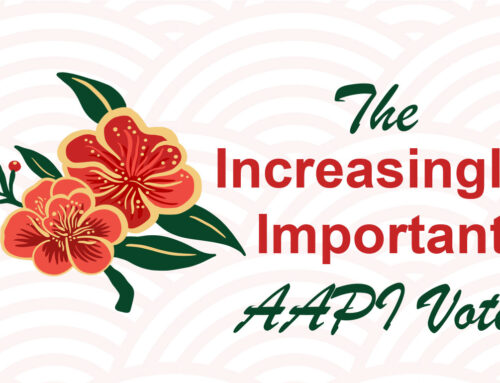With only days remaining until the votes will be counted, all indicators point towards a highly engaged American electorate, with both Democrats and Republicans having reasons to feel optimistic about the end result. Historic precedent would suggest that Democrats are facing an uphill battle, as the President’s party has averaged a loss of 28 House seats and four Senate seats in midterm elections over the last century. But, this isn’t just any midterm election. After the Supreme Court ruling in Dobbs v. Jackson, we’ve seen that women are fired up to let their voices be heard, first by registering to vote in record numbers and now by actually casting their ballots. So, inside of a week to go, here are three reasons for Democrats to feel good, and three reasons for them to be wary of their chances to keep one, or both, chambers in Congress.
3 Reasons for Democratic Optimism
1. Women are fired up
It started in the Kansas primary, when voters delivered a resounding victory for the pro-choice position, fueled by a 40 point gender gap in voter registration in favor of women after the Dobbs decision was announced. Democrats won special elections in NY and AK with women turning out at high rates. Then, we saw voter registration surges among women in other states where reproductive rights were at risk: Wisconsin, Michigan, Pennsylvania, and others. Now, as we analyze the early vote data, those gender gaps are materializing in actual votes cast. Currently, in Michigan, Pennsylvania and Wisconsin, three key battlegrounds that could determine control of Congress, the gender gap is larger in this cycle than it was in both the 2020 and 2018 elections. In Wisconsin, the current gender gap is 11.5 points, whereas it was 9 points at this time in 2020 and 9.5 points in 2018. In Pennsylvania, the current gender gap is 14 points, a one point increase over this same time in 2020 and an 8 point increase over this time in 2018.
2. Surge in total early votes cast
With more than 30 million ballots cast already, total early vote numbers in 2022 are already exceeding the total number of early votes in the 2018 midterm election, when 29 million total votes were cast, and we still have days to go. This is good news, as early voting historically favors Democrats, and former President Trump’s attacks on our voting system have made early voting a political statement, which has had the effect of driving down Republican early voting. Early vote numbers surging is a good sign for Democrats as they seek to build leads and hold off the surge of Republican same day votes. What’s more, banking votes early allows Democrats to focus precious resources on a much smaller pool of target voters on Election Day.
3. Democratic advantage in early votes cast
In the ballots cast so far, the modeled Democratic advantage is 11 points nationwide, which is a 12 point increase over the 2018 midterms. Zooming in on Pennsylvania, the registered Democrat advantage continues to exceed 2020 levels, now a D+52, as compared to D+47 at this point in 2020. The total Democratic turnout advantage so far in Pennsylvania is over 430,000 votes.

3 Reasons for Democratic Concern
1. Youth vote lagging behind
While Democrats should feel good about banking early vote leads in key states, a cause for concern is the fact that early vote numbers so far this cycle are showing that the youth vote is accounting for less of the electorate when compared to this point in 2020. In 2020, 18-39 year olds accounted for 22.3% of ballots cast. Currently, they account for 12.4% of all ballots cast. This could mean that more young voters are planning to turn out en masse on Election Day (polls fairly consistently show younger voters plan to vote on Election Day rather than early), but that remains to be seen. If Democrats want to hang on to the House and Senate, they will surely need a large turnout amongst younger voters.
2. Higher GOP turnout in key states
While Democrats have amassed significant margins in the early vote across the country, the GOP is running ahead of their 2020 early vote shares in a few key states, including Oregon and Florida. While these gaps have been narrowing over the past few days, there is more work to be done to close these gaps.
3. Flood of inconsistent polling driving narratives
The other late cause of concern for Democrats is the recent flood of polling showing favorable results for the GOP, much of which is being produced by unreliable partisan Republican firms. This has the result of skewing polling averages in the GOP’s favor, prompting the media to write stories that can be misleading, predicting momentum back with the GOP. There truly are a great number of polls with absurdly unrepresentative samples that can help to drive an inaccurate narrative and demoralize Democratic voters and activists. While it does appear that the GOP has benefitted from a slight shift in their direction in national polls over the past 2-3 weeks, state-specific polling shows Democrats are holding on by running strong campaigns, generally while running against weak opponents.
The point of all of this is really to tell you that this may be the most uncertain election of our lifetime. Voting laws have changed drastically, Trump waged war on early voting all together, polling has been shifting consistently, and the voting habits of key demographics, namely young people, are somewhat unknown. What we do know is that this election is likely to be very close, and control of Congress could come down to thousands of votes. There’s work to be done. Continue following along @tbonier and @TargetSmart for updates.





